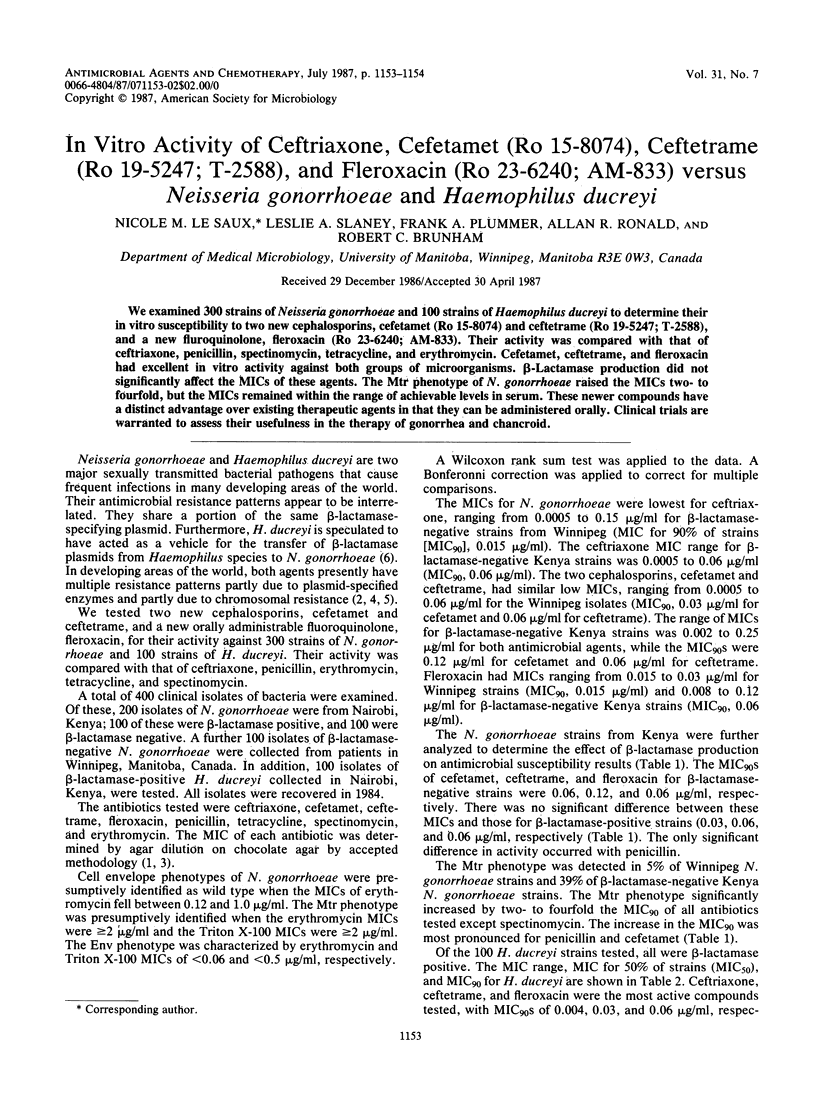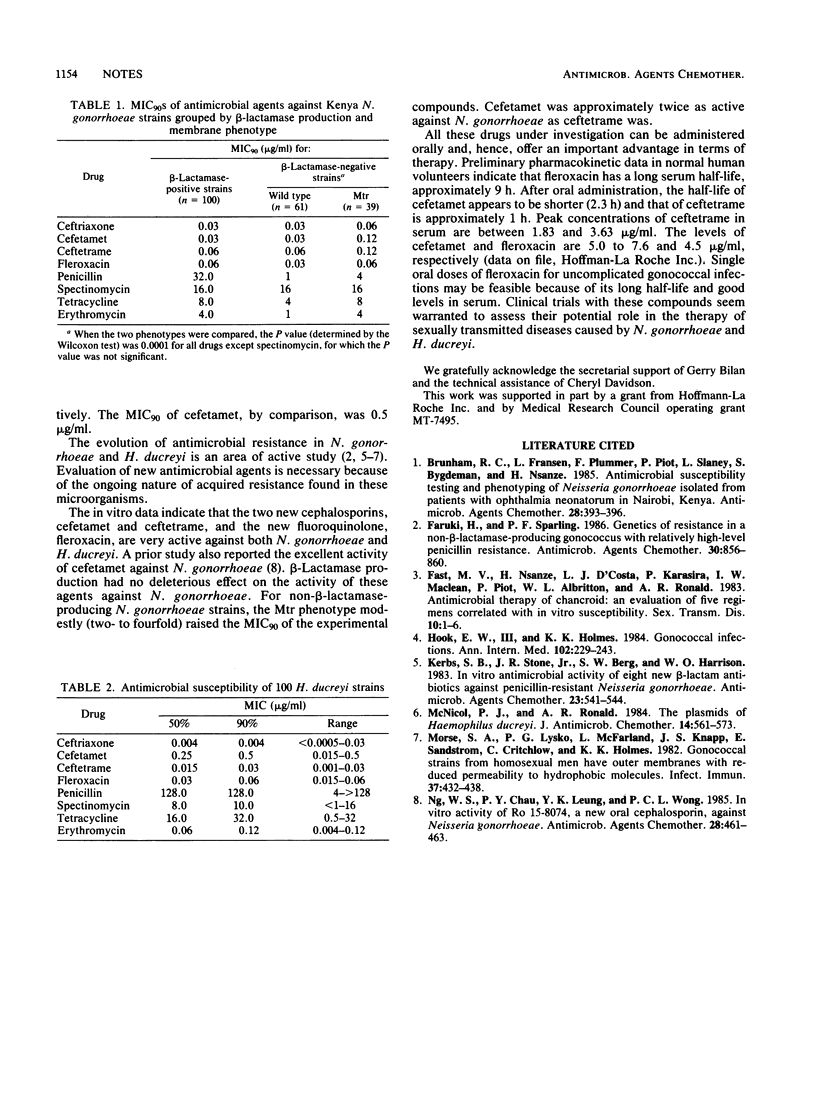Abstract
We examined 300 strains of Neisseria gonorrhoeae and 100 strains of Haemophilus ducreyi to determine their in vitro susceptibility to two new cephalosporins, cefetamet (Ro 15-8074) and ceftetrame (Ro 19-5247; T-2588), and a new fluroquinolone, fleroxacin (Ro 23-6240; AM-833). Their activity was compared with that of ceftriaxone, penicillin, spectinomycin, tetracycline, and erythromycin. Cefetamet, ceftetrame, and fleroxacin had excellent in vitro activity against both groups of microorganisms. beta-Lactamase production did not significantly affect the MICs of these agents. The Mtr phenotype of N. gonorrhoeae raised the MICs two- to fourfold, but the MICs remained within the range of achievable levels in serum. These newer compounds have a distinct advantage over existing therapeutic agents in that they can be administered orally. Clinical trials are warranted to assess their usefulness in the therapy of gonorrhea and chancroid.
Full text
PDF

Selected References
These references are in PubMed. This may not be the complete list of references from this article.
- Brunham R. C., Fransen L., Plummer F., Piot P., Slaney L., Bygdeman S., Nsanze H. Antimicrobial susceptibility testing and phenotyping of Neisseria gonorrhoeae isolated from patients with ophthalmia neonatorum in Nairobi, Kenya. Antimicrob Agents Chemother. 1985 Sep;28(3):393–396. doi: 10.1128/aac.28.3.393. [DOI] [PMC free article] [PubMed] [Google Scholar]
- Faruki H., Sparling P. F. Genetics of resistance in a non-beta-lactamase-producing gonococcus with relatively high-level penicillin resistance. Antimicrob Agents Chemother. 1986 Dec;30(6):856–860. doi: 10.1128/aac.30.6.856. [DOI] [PMC free article] [PubMed] [Google Scholar]
- Fast M. V., Nsanze H., D'Costa L. J., Karasira P., Maclean I. W., Piot P., Albritton W. L., Ronald A. R. Antimicrobial therapy of chancroid: an evaluation of five treatment regimens correlated with in vitro sensitivity. Sex Transm Dis. 1983 Jan-Mar;10(1):1–6. [PubMed] [Google Scholar]
- Hook E. W., 3rd, Holmes K. K. Gonococcal infections. Ann Intern Med. 1985 Feb;102(2):229–243. doi: 10.7326/0003-4819-102-2-229. [DOI] [PubMed] [Google Scholar]
- Kerbs S. B., Stone J. R., Jr, Berg S. W., Harrison W. O. In vitro antimicrobial activity of eight new beta-lactam antibiotics against penicillin-resistant Neisseria gonorrhoeae. Antimicrob Agents Chemother. 1983 Apr;23(4):541–544. doi: 10.1128/aac.23.4.541. [DOI] [PMC free article] [PubMed] [Google Scholar]
- McNicol P. J., Ronald A. R. The plasmids of Haemophilus ducreyi. J Antimicrob Chemother. 1984 Dec;14(6):561–564. [PubMed] [Google Scholar]
- Morse S. A., Lysko P. G., McFarland L., Knapp J. S., Sandstrom E., Critchlow C., Holmes K. K. Gonococcal strains from homosexual men have outer membranes with reduced permeability to hydrophobic molecules. Infect Immun. 1982 Aug;37(2):432–438. doi: 10.1128/iai.37.2.432-438.1982. [DOI] [PMC free article] [PubMed] [Google Scholar]
- Ng W. S., Chau P. Y., Leung Y. K., Wong P. C. In vitro activity of Ro 15-8074, a new oral cephalosporin, against Neisseria gonorrhoeae. Antimicrob Agents Chemother. 1985 Sep;28(3):461–463. doi: 10.1128/aac.28.3.461. [DOI] [PMC free article] [PubMed] [Google Scholar]


